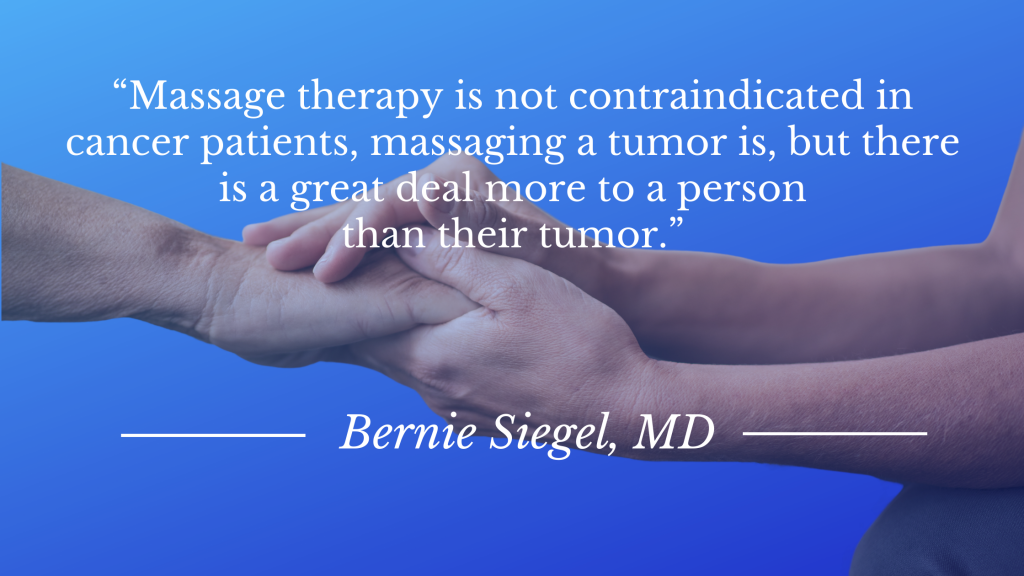
There has been much misunderstanding over the decades about massage and cancer. There was a long-standing myth that people with cancer should not receive massage therapy because it may spread the disease by circulation. Although persistent, that myth started to shift in the later part of the 20th century and now we hope is in the distant past in terms of our knowledge base and practice of massage therapy. As the eminent cancer specialist Bernie Siegel said, a person is much more than their tumor, and by the 1980s and 1990s we saw many Complimentary and Alternative Medicine clinics coming into hospital settings as an adjunct to conventional cancer therapies. Massage has been by far the most popular of these therapies, in this and many writers’ opinions, because it reconnects the patient with a sense of wholeness through touch, and elicits a strong relaxation response.
A cancer diagnosis and the subsequent treatment – often surgery, radiation, and chemotherapy – is certainly one of the most stressful times in the life of any person. It is well documented through research in the medical and psychological fields that stress is one of the root causes of a vast array of diseases, and reduction of stress may be one of the most important things we can do to support health. We know that massage therapy enhances the function of most of our major body systems, improving sleep, digestion, respiration and circulation, immune function, and our overall sense of well-being. This list could not be more important for someone going through diagnosis and treatment of cancer.
The role of the therapist then, is not to fix or to cure, but to nurture and promote relaxation and all of its attending benefits. We accept without judgement all of our clients’ decisions about treatment and work to promote relaxation and wellness during difficult times, enhancing daily quality of life through our presence and our nurturing touch. If you are a massage therapist, settle into this simplicity and bring the full power of your heart and your hands to each session. If you are a client with cancer, seek out the most comforting and relaxing bodywork you can find, and open to the healing power within you.
Carl Johns, LMT
Director, ASIS Massage Education